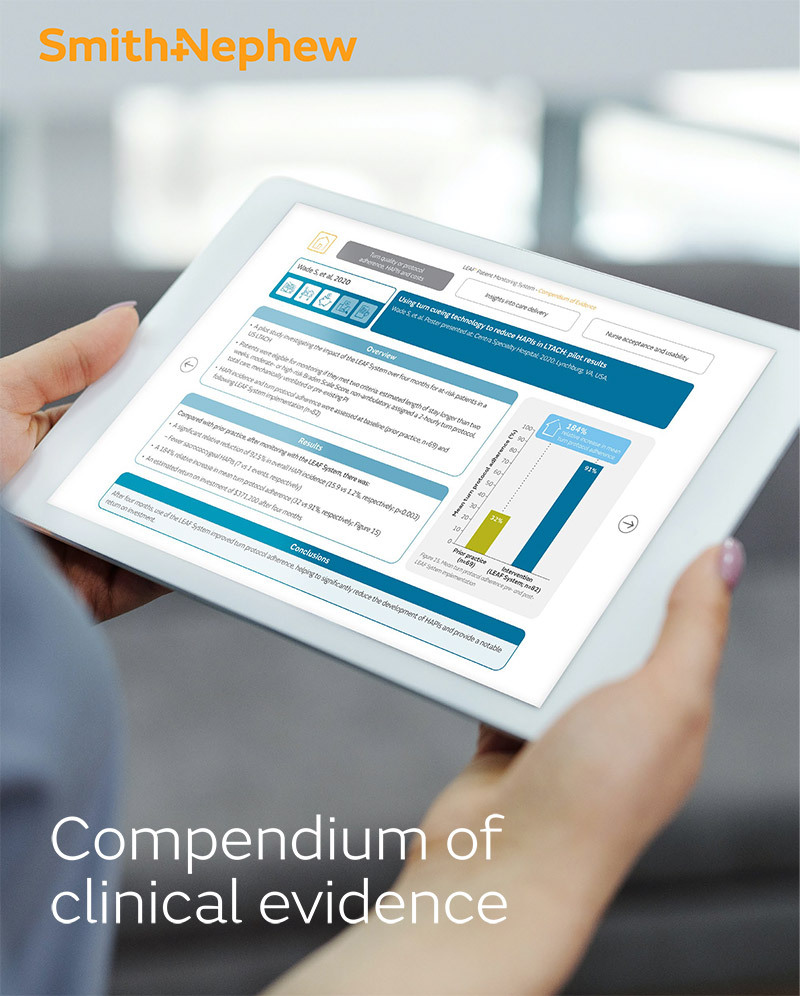The proven leader in turn protocol improvement + HAPI reduction

The LEAF System is backed by a wealth of evidence – including more than a hundred clinical studies – demonstrating:
- Improvement in turn quality or protocol adherence
- Reduced risk of developing HAPIs compared with standard care
- Reduced costs related to HAPIs compared with standard care
- Help in mitigating disparity in care around:
- Nursing shifts
- Patient characteristics such as BMI and ventilator status
- Help improving teamwork, workflow prioritization and communication, which is evident in nurse surveys
Get access to multiple pieces of high-quality evidence, featuring key outcomes, noteworthy metrics and relevant insights, with our full clinical compendium:
The compendium includes evidence supporting the LEAF System’s impact on:
HAPI reduction
Significantly reduced risk of pressure injuries by 94% (Compared with standard of care [p<0.02])23
Turn protocol adherence
Increase in turn protocol adherence rate from national average 52% to 77% – a relative increase of 48%24
Browse additional resources by content:
Innovating pressure injury prevention with a wearable technology
Find out how an innovative wearable sensor system is changing the pressure injury prevention landscape.
Documentation of patient repositioning events: Comparison of Electronic Medical Record documentation and accelerometer-based sensors
This study of turning documentation methods showed how wearable sensors, which record turning automatically, resulted in documentation that was 9x more frequent than that of manual EHR flowsheets…
Using turn cueing technology to reduce HAPIs in LTACH: Pilot results
This four-month pilot study demonstrated a 94% reduction in the incidence of hospital-acquired pressure injuries through the use of wearable sensors to cue patient turns, along with an…
Risk of readmissions, mortality, and hospital-acquired conditions across hospital-acquired pressure injury (HAPI) stages in a US National Hospital Discharge database
This analysis of US hospital discharge records shows how preventing pressure injuries can help reduce unreimbursed treatment expenditures, reduce length of stay, minimize readmissions, prevent…
"Turning" to technology: Reducing pressure injury incidence in critical care with turn cueing
Hospital-acquired pressure injuries (HAPIs) continue to rise despite progress made in reducing all other hospital-acquired conditions (HACs). See how turn cueing helped a critical care unit at the…

